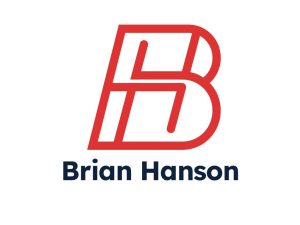In our introduction to local Internet marketing campaigns, we identified two major facets of search engine marketing: on-site search engine optimization (aka on-page SEO) and off-site search engine marketing. In this series, we’re going to move very slowly through all the aspects of on-site SEO that should be covered when building your locally marketable website. By the end of this series, you’ll have a comprehensive checklist for optimizing your website for search engine traffic.
We’re beginning with an entire post devoted to titles. Why? Because titles are incredibly important both to search engines and customers. Your web page’s title is as crucial as a headline is to a newspaper article. It can make or break your entire campaign. It’s often the sole reason why readers read or do not read your page. So it has to be perfect.
Selling the Click
For SEO purposes, the title tag isn’t as important as it once was. Once upon a time, including keywords in the title tag was a surefire way to get a boosted search engine ranking, but now search engines are paying less attention to keywords in titles. This is mostly due to abuse and misuse (too many spammers trying to game the system) and it’s debasement in search algorithm weight is actually to our collective benefit as readers.
With that being said, including keywords in the title (especially as the first words in the title) is still good practice – as long as it occurs naturally. But the de-emphasis on keyworded title tags gives web marketers more incentive to optimize title tags for human readership, which, in reality, is the fun part.
Now, the primary goal of crafting a title for your page is grabbing reader attention. This is more important than ranking number one on the SERPs. That’s because most search users will skim through the top 5 or 10 search results and will likely base their decision on the content of the titles and not the rank. They all have the same visibility, so if the third ranking has a more compelling title than the first ranking, it gets the click.
Taglines in Titles
One way to add hookiness to a title is to include a brief selling point or tagline to the title. Unless you already have wide brand name recognition, going this route rather than including your company name in the title will get you more mileage and more click throughs. For example:
- Good: MyCompany Inc. – Local Internet Marketing
- Better: Local Internet Marketing – Driving Qualified Traffic to Your Website
View the words in the title as an opportunity, not just space to fill. Those 65 characters will reach more eyes than any of the other words on your page. Make ’em count.
Elements of Title Style
Because you’re dealing with a very small space with the title, you want to lavish a great amount of detail when honing and tweaking your title. This includes fine tuning everything from your word choice to your capitalization and punctuation placement. Of course, the typical rules of grammar don’t apply. Rather, you want your title to embrace as many of these qualities:
Legitimacy
Don’t write your title like eBay feedback or a phonebook entry. Listings aren’t sorted in alphabetical order, so including stuff like “#1” or “!!” doesn’t matter. Also, using symbols, lingo and acronyms such as “A++++” or “FTW” doesn’t appeal as readily to a wide audience. The same goes for blatant keyword stuffing. A title such as “A+++ #1 lexmark ink cartridge lexmark refill lexmark printer discounts DEALS” sounds spammy and inhumane. Stick to natural phrasing.
Brevity
Avoid having your title cut off by staying within the character limit. Google displays the shortest titles at 65 characters, so try to work in your complete message into the space provided. Otherwise you’re title will be cutoff by ellipses, which looks untidy and unattractive.
Uniqueness
Standing out is key. Think of an angle that will make your website stick out. If you Google something like “Shoes” and all of the listings say “Shoes for Sale” or “Shoe Store” or “Online Shoes,” then you can get an edge by having your listing break the mold and say something like “Designer Shoes: 70% Off Retail Prices.” Introducing a bit of humor or wit never hurts either – as long as it’s genuinely funny. Clever puns get clicks, but groaners and awkwordplay get passed up.
Readable Formatting
As we mentioned before, the typical rules of grammar don’t apply, but for readabilities sake, stick to logical conventions. Always avoid ALL CAPS (reads like you’re yelling) and excessive exclamation or question marks (“Looking for cheap trailers????? CALL US TODAY!!!!!!”). However, feel free to insert some conservative punctuation to break up ideas within a title: “Responsive IT Support. Affordable Flat-fee Pricing.” This uses less characters than inserting a conjunctive word and is cleaner and has higher impact than using a comma.
Conclusion
There are two takeaway lessons here:
- Keyword stuffing titles isn’t as important as it once was, but including keywords is good practice if you can pull it off naturally.
- Craft titles to garner clicks – not to rank high.
When it comes to creating titles for your webpages, it’s all about getting those clicks. To do this, you need to stand out with a unique hook and reach people on a human level. SEO is always important, but there are better places to optimize your website than the title – especially when so much is riding on those five or six words.
